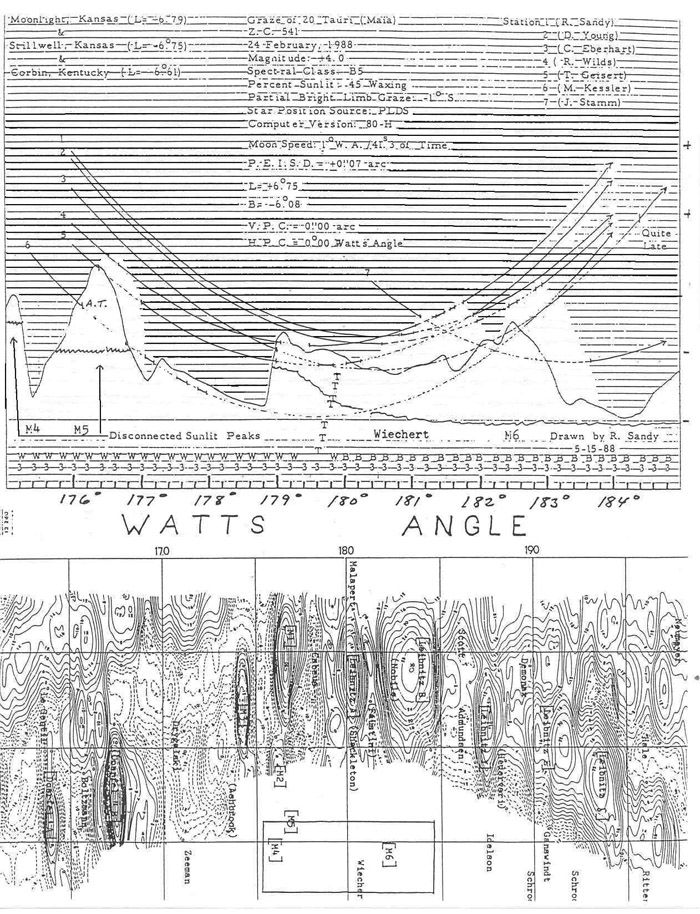June 25, 2013
Interrupted Grazes

Image provided by Richard Wilds. Curved lines on top chart show passage of grazing star Maia as seen by teams from Moonlight Kansas, Stillwell Kansas and Corbin Kentucky. Bottom chart is topo map of limb regions from Watts (1963).
Many grazing occultations have been observed over the years, but few could rise to the beauty of this observation. Virtually 100% of grazes are observed at a dark limb of the Moon due to the inability to observe stars up against a lunar bright limb. But on 24 Feb 1988 the Moon moved past the Pleiades star Maia with the South Pole mountains M4 and M5 going past first. They were extended sunlit peaks sticking out into the dark side and very bright. The only way to make observations of the star’s disappearances and reappearances was to note the loss of blue color from near the mountain and the return of blue color when the star reappeared. Then the star moved through an extensive cavern of darkness before it approached the faintly lit plateau leading to the mountain, M6. For the first time in my experience as a graze occultation leader I could anticipate when the star was to disappear due to seeing the topography! This event occurred near the lunar South Pole as shown by the lower two Watts Charts. The lunar near side is toward the words "Watts Angle" and the far side is beyond the rectangle that outlines the graze location on the Watts Charts. You can see that the graze area is completely in an area which cannot easily be imaged from Earth. This is the reason teams like ours traveled great distances to make such observations as this was the only way to fill in the huge blank space shown in this part of the Watts Charts. We accomplished the only map extensions into what became the Lunar South Pole Aitken Basin Region and were first to discover that this area of the Moon was much lower than had assumed before the latest surge of modern lunar space missions. We now know that this lower topography is due to the Aitken Basin being formed by an early asteroid impact that lowered the general central topography while raising the various mountain rim segments in the general South Pole region.
Richard Wilds
Related Links
21st Century Atlas chart L4.
Yesterday's LPOD: Jogger's Moon
Tomorrow's LPOD: Rigabigadiga
COMMENTS?
Register, Log in, and join in the comments.



